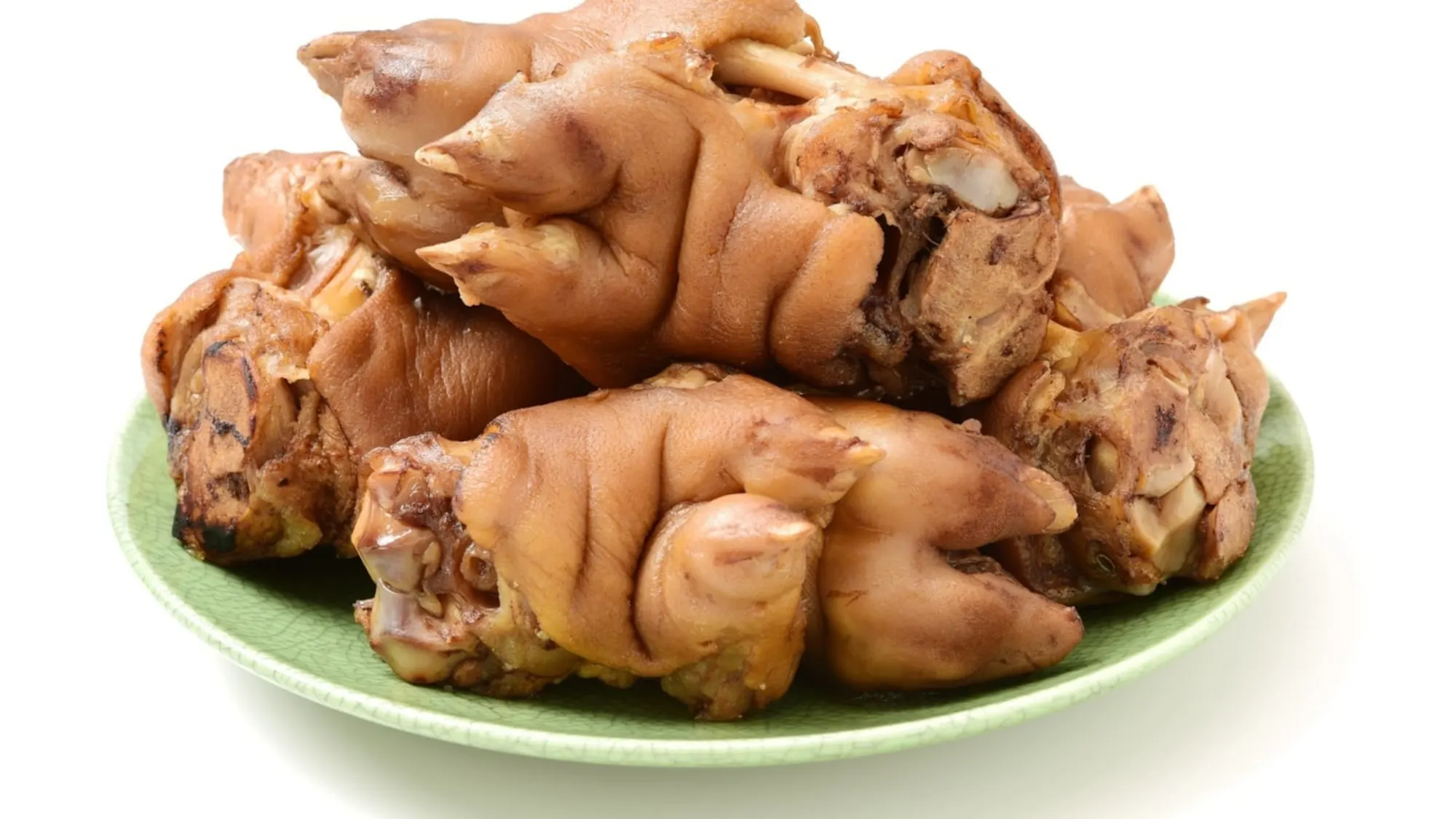
Crubeens (Pig's Feet)
Traditional Irish dish of boiled pig's feet, often breaded and fried. Once a popular pub snack.
Ingredients
- •Pig's feet
- •Onions
- •Carrots
- •Bay leaves
- •Peppercorns
- •Breadcrumbs
- •Eggs
- •Flour
Instructions
Boil
Slowly cook feet with vegetables and herbs
Cool
Allow to cool and remove meat
Bread
Coat in flour, egg, and breadcrumbs
Fry
Fry until golden and crispy
Crubeens, the Irish word for pig's feet, is a traditional dish that showcases Ireland's nose-to-tail eating culture and resourceful culinary heritage. These tender, gelatinous treats were once a popular pub food, particularly in Cork and Limerick, where they were traditionally eaten by hand as a savory snack alongside a pint of stout.
The preparation of Crubeens is a labor of love that begins with a long, slow cooking process. The pig's feet are gently simmered with aromatic vegetables, bay leaves, and peppercorns until the meat becomes incredibly tender and falls off the bone - a process that can take up to three hours. The resulting meat is then typically breaded and fried until golden and crispy, creating an interesting contrast of textures between the crispy exterior and the rich, tender meat within.
While the traditional method involves simply boiling and serving the feet, modern preparations often include the extra step of breading and frying, which makes them more appealing to contemporary palates. Some cooks add their own twist by incorporating different herbs and spices into the cooking liquid, or by serving them with various dipping sauces. However, purists prefer them simply seasoned with salt and pepper.
In Ireland's culinary history, Crubeens were particularly popular among workers and pub-goers, often sold by street vendors outside pubs. They were valued not only for their taste but also for their affordability, making use of a part of the pig that might otherwise go to waste. Today, while less common than in the past, they can still be found in traditional Irish pubs and restaurants that celebrate authentic Irish cuisine.
From a nutritional perspective, Crubeens are rich in collagen and gelatin, which are beneficial for joint health and skin elasticity. They're also a good source of protein and minerals. However, the modern breaded and fried version can be quite high in calories and fat. Those with concerns about cholesterol should consume them in moderation. It's worth noting that eating Crubeens requires some patience and technique - they're traditionally eaten with the hands, and while this can be messy, it's part of the authentic experience.
